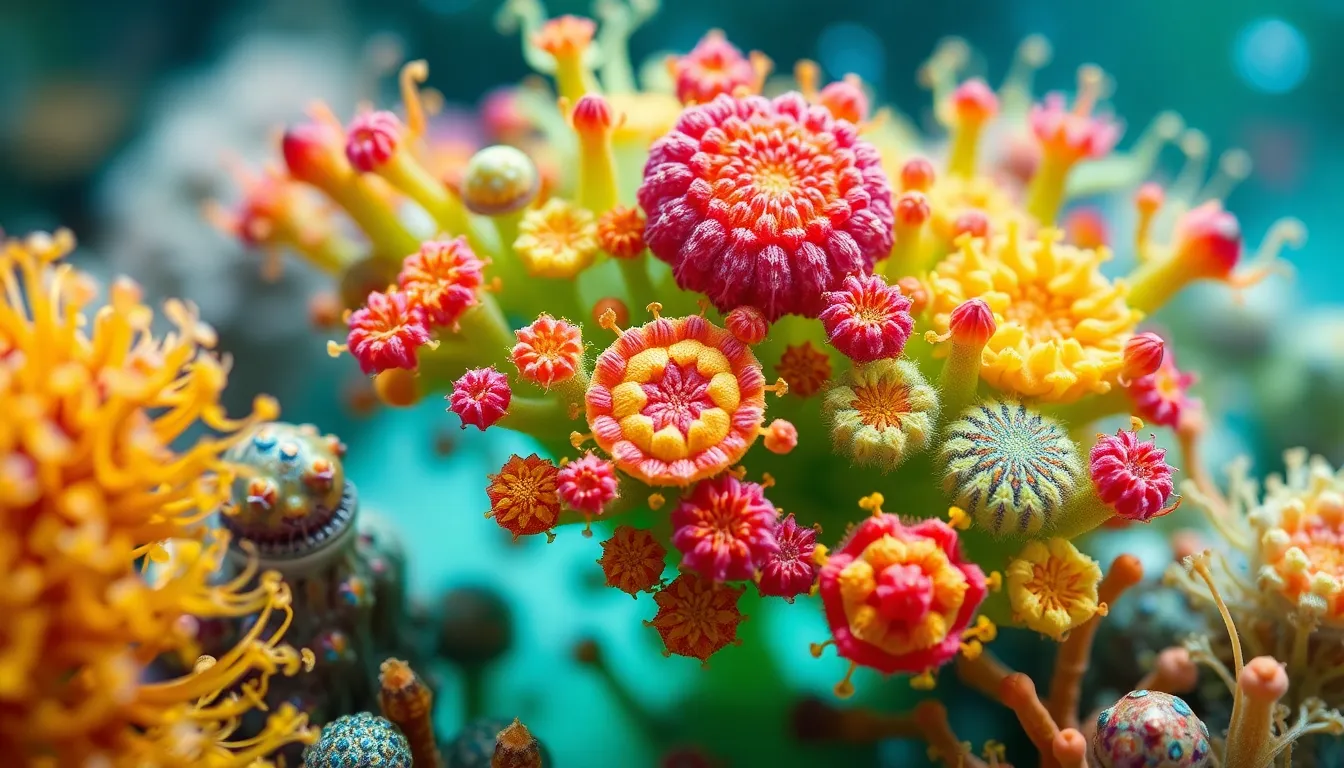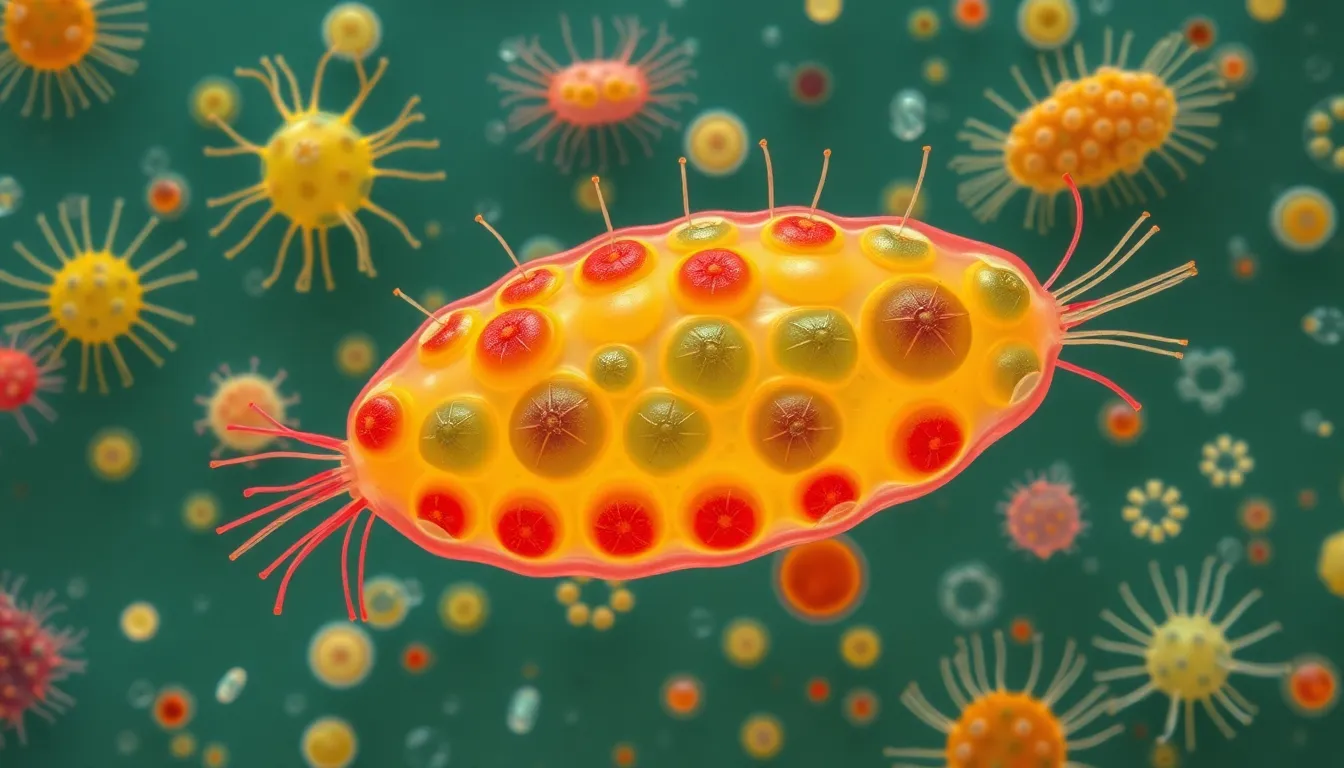Imagine a world where your health and well-being could be transformed by a tiny, unassuming organism. Enter alomesteria, the unsung hero of the microbial kingdom. This remarkable entity might just be the secret ingredient your body’s been missing. Packed with potential benefits, alomesteria could help you feel like a superhero—cape not included.
But wait, what exactly is alomesteria? It’s not a new dance move or a trendy café; it’s a fascinating organism that’s gaining attention for its unique properties. As science delves deeper into its wonders, the buzz around alomesteria is growing louder. So, if you’re curious about how this little powerhouse can impact your life, stick around. You might just find that alomesteria is the quirky ally you’ve been looking for in your quest for better health.
Table of Contents
ToggleOverview of Alomesteria
Alomesteria represents a significant development in microbial research, possessing unique properties that differentiate it from other microorganisms. Researchers recognize it for its potential health benefits, which could range from enhancing gut health to boosting the immune system. Studies demonstrate that alomesteria can positively impact physiological processes, making it a subject of growing interest in scientific communities.
This microorganism thrives in diverse environments, contributing to its adaptability and resilience. Its biocompatibility and safety profile position it as a promising candidate for health-related applications. Investigations reveal that alomesteria interacts with human cells, promoting beneficial biochemical responses.
Emerging evidence suggests alomesteria may possess antioxidant properties, which help counteract oxidative stress. By scavenging free radicals, it contributes to cellular protection and overall well-being. Furthermore, its potential to modulate inflammation has sparked interest for applications in chronic disease management.
Applicability extends beyond health benefits. Alomesteria’s role in bioremediation demonstrates its versatility, indicating potential uses in environmental sustainability. Researchers explore its use in soil health restoration and wastewater treatment, showcasing its ecological significance.
Continued exploration of alomesteria promises numerous insights. Investigations aim to elucidate its mechanisms of action and identify specific compounds responsible for its health benefits. The promising nature of this microorganism positions it as an essential topic for future research and application in both health and environmental contexts.
Key Characteristics of Alomesteria

Alomesteria exhibits several distinctive traits that contribute to its significance in health and environmental science.
Physical Appearance
Alomesteria is often characterized by its vibrant coloration, which varies based on the species and environmental factors. Microscopic examination reveals a unicellular structure with unique shapes, often described as oval or rod-like. Size measurements typically range from 1 to 5 micrometers, making these microorganisms nearly invisible to the naked eye. Some species possess flagella, aiding in mobility, while others exhibit a gelatinous outer layer. This physical variability allows alomesteria to adapt to different surroundings effectively.
Habitat and Distribution
Alomesteria thrives in diverse ecosystems, including freshwater, soil, and marine environments. Studies indicate that it can survive in extreme conditions, such as high salinity and varying temperatures. Geographically, alomesteria is found across various continents, with significant populations in regions like wetlands and estuaries. Its robust nature enables it to colonize disturbed habitats where other microorganisms struggle. Environmental assessments show that alomesteria plays a crucial role in nutrient cycling and contributes to the overall health of ecosystems.
Benefits of Alomesteria
Alomesteria offers numerous benefits across health and environmental fields. Researchers continue to uncover its valuable properties.
Medicinal Uses
Alomesteria shows promise in improving gut health by fostering a balanced microbiome. Its antioxidant properties help in reducing oxidative stress, which supports overall cellular health. Various studies indicate its role in enhancing immunity, as it may help modulate inflammatory responses. Discoveries suggest that certain compounds within alomesteria could aid in managing chronic diseases, making it a potential therapeutic tool. Researchers emphasize the microorganism’s safety profile, reinforcing its viability in health applications.
Environmental Impact
Alomesteria plays a significant role in bioremediation, effectively breaking down pollutants in contaminated environments. Its ability to restore soil health contributes to sustainable agricultural practices, improving nutrient retention and soil structure. Various species thrive in diverse conditions, making them suitable for enhancing ecosystem resilience. Alomesteria also aids in wastewater treatment, facilitating the removal of toxins and reducing environmental impact. Its robust nature allows it to colonize disturbed habitats, promoting biodiversity and ecosystem stability.
Challenges in Alomesteria Research
Alomesteria research encounters several obstacles that impede progress. Limited funding for microbiology studies restricts the number of comprehensive investigations. Researchers face difficulties in isolating specific species due to the microorganism’s diverse and adaptive nature. Samples collected from various ecosystems often contain mixed populations, complicating the analysis.
Lack of standardized methodologies impacts study comparison and reproducibility. Consequently, variations in experimental conditions affect the obtained results. Additionally, insufficient understanding of alomesteria’s genetic makeup hinders targeted research efforts. The lack of genomic data limits the ability to explore potential applications in health and environmental contexts.
Researchers also contend with regulatory challenges when considering alomesteria for commercial use. Approval processes for novel microorganisms can be lengthy and complex, creating barriers to innovation. Furthermore, concerns about the safety profiles of specific alomesteria strains arise due to limited human and environmental impact data.
Collaboration among researchers is essential for overcoming these hurdles. Sharing information and resources can accelerate progress in understanding alomesteria’s mechanisms and applications. Developing partnerships with institutions and government bodies can facilitate more robust research projects.
Continued efforts to address these challenges will advance alomesteria research, unlocking its full potential in health and environmental fields.
Future Directions in Alomesteria Studies
Research on alomesteria is evolving, focusing on its unique properties and potential applications. Scientists target antioxidant capabilities, which may counteract oxidative stress and inflammation, potentially aiding in chronic disease management. New technologies in genetic analysis promise to provide deeper insights into the genetic makeup of alomesteria, allowing for focused studies on specific species.
Investigators aim to develop standardized methodologies to enhance study reproducibility. Such frameworks will facilitate comparisons across different studies, driving collaboration in the research community. Understanding alomesteria’s interactions within ecosystems also stands as a priority, especially regarding its role in nutrient cycling.
Environmental applications are also under exploration. Researchers investigate how alomesteria can improve bioremediation techniques and its effectiveness in restoring soil health and treating wastewater. Insights into these applications could lead to significant improvements in ecological sustainability.
Moreover, the safety profile of alomesteria remains a critical area of focus. Ongoing studies will reinforce its viability for health-related uses and potential therapeutic applications. Collaboration between health and environmental scientists could unlock new strategies for utilizing alomesteria’s benefits.
Future directions also necessitate addressing funding challenges that hamper research initiatives. Enhanced financial support and resource allocation can accelerate exploration in this exciting field. Emphasis on interdisciplinary partnerships may propel innovative approaches, ultimately expanding the understanding of alomesteria and its myriad applications.
Alomesteria stands at the forefront of microbiological research with its potential to transform health and environmental practices. Its unique properties offer promising avenues for improving gut health and enhancing immunity while also addressing ecological challenges through bioremediation and soil restoration.
As research continues to evolve, the focus on alomesteria’s antioxidant capabilities and adaptability will likely unveil new insights. Collaborative efforts among scientists will be crucial in overcoming existing challenges and unlocking the full potential of this remarkable microorganism. The future looks bright for alomesteria as it paves the way for innovative solutions in both health and environmental sectors.



